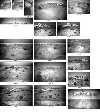
(2 Mbytes)
 |
This image montage shows every lander image obtained from
the rover Sojourner. Beneath each image are the Sol the images were taken.
(2 Mbytes) |
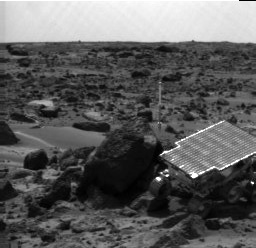 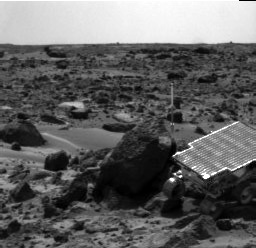 |
Left and right images of Sojourner traversing near Half Dome. |
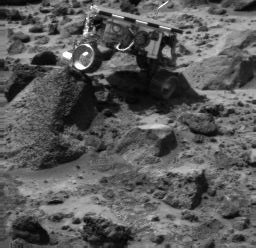 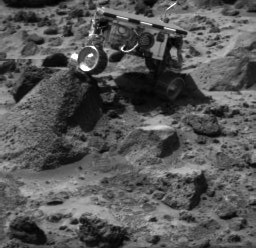
August 20 (Sol 47) |
Left and right images of the Sojourner rover perched atop Wedge rock during Sol 47. Sojourner has safely traversed off of Wedge and is now the vicinity of Shark rock where it will perform additional APXS measurements. In these images the vantage point of the IMP camera provides a view looking into the throat of the APXS. The APXS is the round object in the center of the front surface of the rover. |

August 20 (Sol 47) |
A view of flat top rock from Sol 47. |
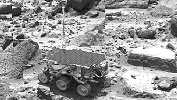
August 20 (Sol 47) |
The Sojourner Rover backing up toward Flat Top and away from Wedge. |
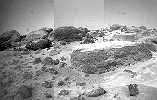
August 20 (Sol 47) |
A close up view of Flat Top. |

The missions are managed by the Jet Propulsion Laboratory, Pasadena, CA, for NASA's Office of Space Science, Washington, DC.